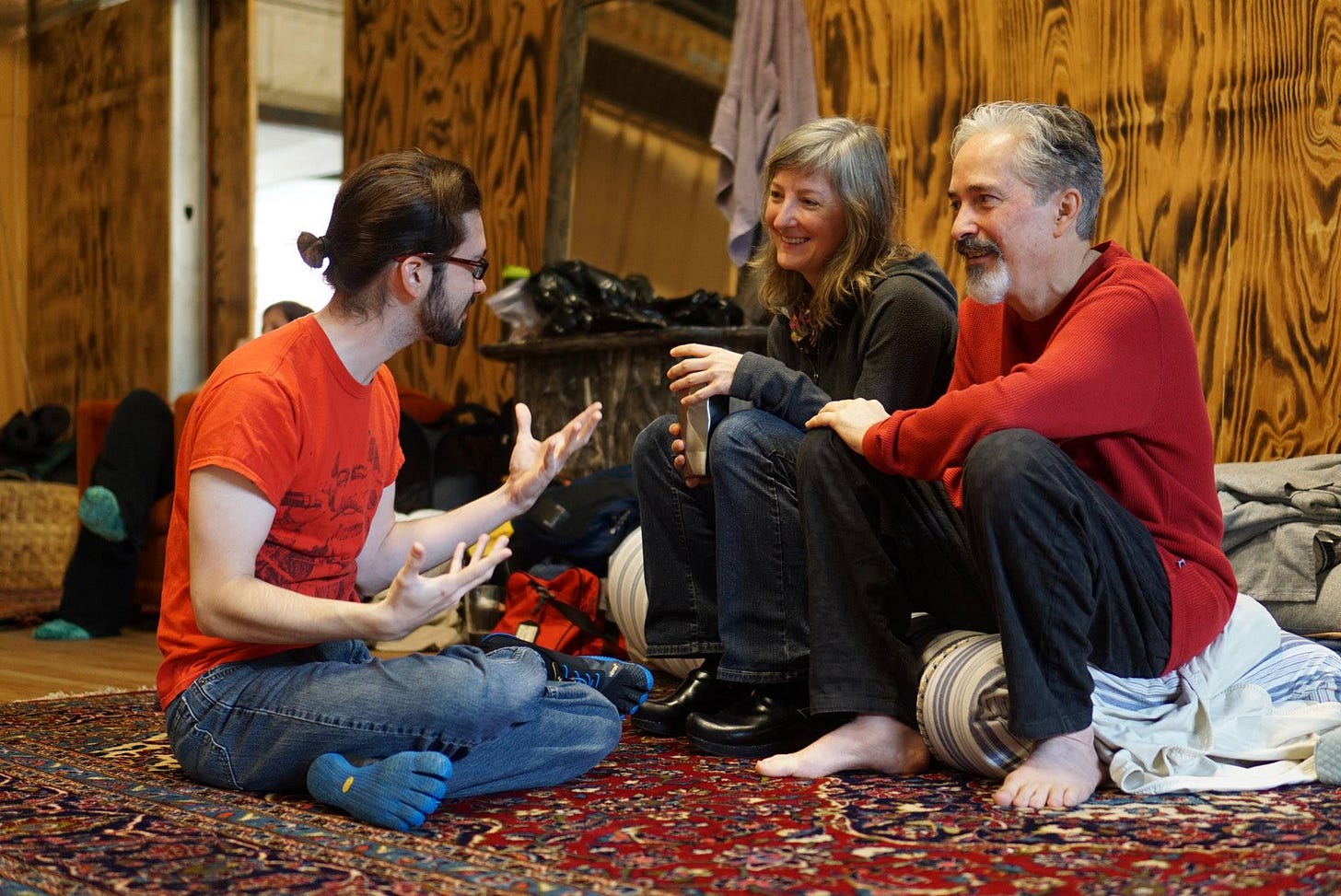I just returned from a weekend retreat with my women’s group, currently called Women of Integrity, Commitment, and Valor (more later on the funny story of why we sound like a Christian cult).
I’ve been involved in women’s groups for the past decade. Although they are prone to falling apart as members prioritize self-care over connection, they are so nourishing that I keep returning to them, and creating them where they don’t exist.
I wanted to write an article on what makes a great women’s group, one where all members are fully supportive, inspired, and involved.
But as I started on that article, a preceding question arose. Why are women drawn to women-only groups, and men to mens’? Why do same-sex gatherings feel important even for me, someone surrounded by expressions of empathy and authenticity from all sides?
This will be a 2-part series. The first part (this one) will talk about why we look for same-sex groups, even in a highly gender-accepting society. If you’ve ever felt judgmental of women’s or men’s-only groups, you might find this research as fascinating as I did.
The second part will talk about different formats that women’s groups can take, and best practices in case you want to start one of your own.
My articles are not usually calls to action. But if you enjoy this series, I hope you’ll think about gathering with other women, other men, or members of whatever gender you share. I believe these groups can be the home for a safety and comfort that doesn’t happen anywhere else.
In fact, I now know it.
The Stats on Same-Sex Communication
I have to admit, y’all, I’ve been looking forward to researching this article for a long time. The lines between gender and sex have become a matter of debate in modern progressive culture. This leads to questions like: “Why does it have to be women’s groups? Why not have mixed groups? What is a woman, anyways?”
To note here: almost all the women’s groups I have been part of had AFAB gender-neutral or mixed-gender people, and it didn’t seem to affect the culture much. (I haven’t been in one with trans members as yet, but I am very curious about that!) The following differences are a mix of biology and culture that take effect before we can explore our gender as distinct from our sex.
Mixed-gender groups are valuable in their own ways, and I am certainly a member of many of those as well. But I feel a particular sigh of relief when I’m with a group of people who have been raised as women. That’s what I’m curious to explore here.
There are many ways to ask this question, and factors to explore. What is the level of safety women feel with men vs other women? Where do mixed vs single sex groups hang out? Are there biological or chemical draws to or against single-sex groups? These can all be cool ways to study the question…but what I personally notice is that when I’m with single-sex groups, I speak differently. I feel more comfortable throwing out ideas, asking questions, talking about myself, and feeling received in my expression. So, I decided to focus my exploration on linguistics.
In any group, there are factors influencing the ease of conversation. Such as:
The range of topics that are acceptable or expected
The distribution of talk time and style
Listeners’ verbal and nonverbal cues
In other words, what can you talk about, who dominates the conversation, and how do people respond when others are talking.
(Note: in the following text, whenever a claim is made that doesn’t reference my own experience, it is cited from a study.)
What can you talk about?
Communication topics do seem to differ between mixed and single-sex groups. Based on studies in 1993 and 1996, men and women talked about sexuality more with members of the same sex than with the opposite. Women also talked more together about relationship problems, reproductive matters, health, family, weight, clothing, and men than they do with their male friends. Men talked more about sports, hobbies, and activities than women did.
My women’s groups have been about 50/50 in how much we talk about emotional processes versus work and hobbies. I know many men these days who talk about their relationship problems with their male friends. But, I still talk more about sexual, relational, and emotional processes with my women friends than my man ones. Though most topics are acceptable in a mixed-sex progressive group, early socialization tells us what is and isn’t desirable to talk about in groups of people who share - or don’t share - our characteristics. It takes work to get past those conversational barriers.
IMO, a lot of the comfort we find in particular groups or relationships is the lack of these barriers. For instance, if you are autistic, you will likely feel more comfortable in a group of other autists, where you can speak freely about stimming and not have to explain your patterns of speech. If you are female with other females, you don’t have to explain why periods are hard, so you can dive more deeply into the topic and feelings involved.
Bridging the worlds of topic and style, I found the following quote fascinating:
“Men are more likely than women to emphasize making conversation fun. Their discussions are more likely to involve joking and good-natured teasing. By contrast, women’s conversations focus more frequently on feelings, relationships, and personal problems.” - Interplay: The Process of Interpersonal Communication, 10th edition
Different gender groups prioritize different topics. Ok, that’s cool to know. But it doesn’t fully explain why same-sex groups should be so desirable. Why not just have a few 1:1 lady-friends, or male friends who are comfortable talking about anything?
Let’s get to the next group gender difference…
Who dominates?
Keep reading with a 7-day free trial
Subscribe to Sara’s Substack to keep reading this post and get 7 days of free access to the full post archives.






